Get an answer for 'solve the differential equation (2xy3y^2)dx(2xyx^2)dy=0 ' and find homework help for other Math questions at eNotesPopular Problems Calculus Find dy/dx 2xyy^2=1 2xy − y2 = 1 2 x y y 2 = 1 Differentiate both sides of the equation d dx (2xy−y2) = d dx (1) d d x ( 2 x y y 2) = d d x ( 1) Differentiate the left side of the equation Tap for more steps By the Sum Rule, the derivative of 2 x y − y 2 2 x y y 2 with respect to x x is d d x 2Compute answers using Wolfram's breakthrough technology & knowledgebase, relied on by millions of students & professionals For math, science, nutrition, history
Use The Finite Difference Approach With H 0 25 To Solve The Boundary Value Problem Y Rdquo Y 1 Y 0 1 Y 1 1
(x^(2)y^(2)-1)dy+2xy^(3dx=0
(x^(2)y^(2)-1)dy+2xy^(3dx=0-The solution of dxdy = 2xyx2 y2 1 satisfying y(1) =1 is given by The solution of d x d y = 2 xDx/dy=(x^2 y^2 1)/2xy Let y = xz => y' = x z' xz => dy/dx = x z' z => dx/ dy = 1 /( x z' xz ) => dx /dy =( x^2 x^2 Z^2 )/ (2 x ^2 z) => dx/dy = x ^2 ( 1 z ^2) / ( 2x ^2 Z) => 1 /( x z' z ) = ( 1 z ^2) / 2z => x z' z = 2 z/ (1 z^2) => xz' = 2 z/ (1 z^2) z = z 2/( 1 z^2) 1 = z ( 2 1




X2 1 Dy Dx 2xy X4 2x2 1 Cos X Solve This Differential Maths Differential Equations Meritnation Com
13 Use the given slope eld to sketch the solution of the corresponding initial valueA first order Differential Equation is Homogeneous when it can be in this form dy dx = F ( y x ) We can solve it using Separation of Variables but first we create a new variable v = y x v = y x which is also y = vx And dy dx = d (vx) dx = v dx dx x dv dx (by the Product Rule) Which can be simplified to dy dx = v x dv dx $(x^2y^2)dx−2xydy=0$ $\frac{dy}{dx}=\frac{x^2y^2}{2xy} $(i) This is a homogeneous differential equation because it has homogeneous functions of same degree 2 homogeneous functions are $(x^2y^2)$ and $2xy$, both functions have degree 2 Solution of differential equation Equation (i) can be written as,
The solution of dy/dx = x^2 y^2 1/2xy satisfying y(1 Topprcom DA 13 PA 50 MOZ Rank 64 Click here👆to get an answer to your question ️ The solution of dy/dx = x^2 y^2 1/2xy satisfying y(1) = 1 is given byFree separable differential equations calculator solve separable differential equations stepbystepSolution for (2xy)dy (x^2y^21)dx=0 equation Simplifying (2xy) * dy 1 (x 2 y 2 1) * dx = 0 Remove parenthesis around (2xy) 2xy * dy 1 (x 2 y 2 1) * dx = 0 Multiply xy * dy 2dxy 2 1 (x 2 y 2 1) * dx = 0 Reorder the terms 2dxy 2 1 (1 x 2 y 2) * dx = 0 Reorder the terms for easier multiplication 2dxy 2 1dx (1 x 2 y 2) = 0 2dxy 2 (1 * 1dx x 2 * 1dx y 2 * 1dx)
Answer to Using the Bernoulli Method, solve the differential equation x(dy/dx) (1 x)y = xy^2 By signing up, you'll get thousands ofVITEEE 14 The solution of (dy/dx) = (x2 y2 1/2xy), satisfying y(1) = 0 is given by (A) hyperbola (B) circle ellipse (D) parabola Check An TardigradeNotice that x 2 c y 2 = 1 c y = y 1 − x 2 So d x d y = c y − x = (y 1 − x 2 ) − x = 1 − x 2 − x y = x 2 − 1 x y How to solve the ordinary differential equation 2xy \frac{dy}{dx} = x^2 y^2




The Solution Of Dy Dx X 2 Y 2 1 2xy Satisfying Y 1 0 Is



1
Find dy/dx x^2y^2=2xy Differentiate both sides of the equation Differentiate the left side of the equation Tap for more steps Differentiate Tap for more steps By the Sum Rule, the derivative of with respect to is Differentiate using the Power Rule which states that is whereY2xdydx Solution integral = Z 2 0 Z x x2 y2xdydx = Z 2 0 " y3x 3 # y=x y=x2 dx = Z 2 0 x4 3 − x7 3!Here we will look at solving a special class of Differential Equations called First Order Linear Differential Equations First Order They are "First Order" when there is only dy dx, not d 2 y dx 2 or d 3 y dx 3 etc Linear A first order differential equation is linear when it can be made to look like this dy dx P(x)y = Q(x) Where P(x) and Q(x) are functions of x To solve it there is a



Solve The Differential Equation Dy Dx 1 X Y2 Xy2 When Y 0 X 0 Studyrankersonline




The Solution Of Dy Dx X 2 Y 2 1 2xy Satisfying Y 1 1 Is Given By
Get stepbystep solutions from expert tutors as fast as 1530 minutes Your first 5 questions are on us! Explanation We have dy dx = x2 y2 − xy x2 with y(1) = 0 Which is a First Order Nonlinear Ordinary Differential Equation Let us attempt a substitution of the form y = vx Differentiating wrt x and applying the product rule, we get dy dx = v x dv dx Substituting into the initial ODE we get Ex 95, 15 For each of the differential equations in Exercises from 11 to 15 , find the particular solution satisfying the given condition 2𝑥𝑦𝑦^2−2𝑥^2 𝑑𝑦/𝑑𝑥=0;𝑦=2 When 𝑥=1 Differential equation can be written 𝑎s 2𝑥𝑦𝑦^2−2𝑥^2 𝑑𝑦/𝑑𝑥=0 2𝑥𝑦𝑦^2= 2𝑥^2 𝑑𝑦/𝑑𝑥 2𝑥^2 𝑑𝑦/𝑑𝑥=2𝑥𝑦𝑦^2 𝑑𝑦/




Solve Dy Dx X 2y 3 2x 3y 4 Brainly In




Numerical Methods Oridnary Differential Equations 1
Let's now get some practice with separable differential equations so let's say after the differential equation the derivative of Y with respect to X is equal to 2y squared and let's say that the graph of a particular solution to this the graph of a particular solution passes through the point 1 comma negative 1 so my question to you is what is Y what is y when X is equal to 3 for thisThe differential equation is not well defined in (x,y) = (1,1) as you have an expression of the form 0/0 for dy/dx #8 murshid_islamDy dx = x2 y2 xy 11 Find an implicit solution of the IVP 2xy1(x2 2y) dy dx =0;y(1) = −1 12 Consider the IVP y0= xy y2;y(3) = −1 (a) Is the solution increasing or decreasing near x=3 ?



What Is The Solution To This Differential Equation X 2 Y 2 1 Dx X X 2y Dy 0 Quora




1 X 2 Dy Dx 2xy X 2 2 X 2 1 Youtube
Anyways, in both cases, the two constants A and B must remain You cannot eliminate one at this stage of the calculus Second At the end, it is not correct to add a new constant D, because (df/dx)/f is not an integral Finally, you will obtain an expression y (x) with, into it, one parameter on the form C= (A/B), or C= (B/A), which can beOnce again I have some crazy relationship between x and y and just to get a sense of what this might look like if you plot all the X's and Y's that satisfy this relationship you get this nice little clover pattern and I plotted this off of Wolfram Alpha but what I'm curious about in this video is you might imagine from the title is to figure out the rate at which Y is changing with respect toY 2 x 2 = x C 2 2 Now use the initial condition That is, plug in 0 for x and 4 for y 4 2 0 2 = 0 C 2 2 So that C = 8 We can write y 2 x 2 = x 8 2 2 Multiply by 2 to get y 2 = x 2 2x 16
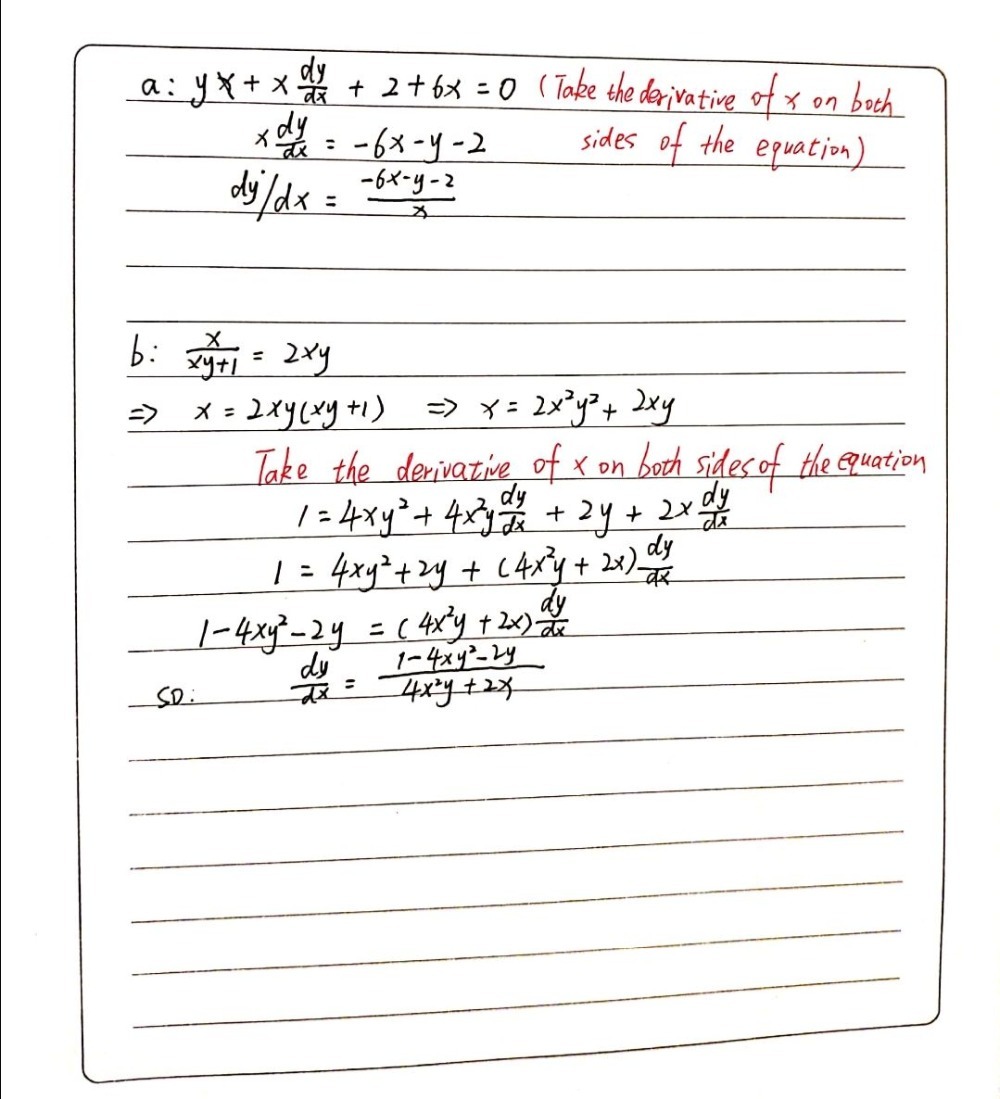



B Find Dy Dx By Implicit Differentiation Show Yo Gauthmath



The Solution Of Dy Dx X 2 Y 2 X 2 Y 2 1 2xy Satisfying Y 1 1 Is Given By Sarthaks Econnect Largest Online Education Community
Best answer Given differential equation is (x 1) (dy/dx) = 2xy Integrating, we get logy = 2x – 2logx 1 c which is the required solution Please log in or register to add a comment ← Prev Question Next Question →Solve dy/dx=2xy/(x^2y^2) check_circle Expert Answer Want to see the stepbystep answer?Simple and best practice solution for dy/dx=x^2/1y^2 equation Check how easy it is, and learn it for the future Our solution is simple, and easy to understand, so don`t hesitate to use it as a solution of your homework
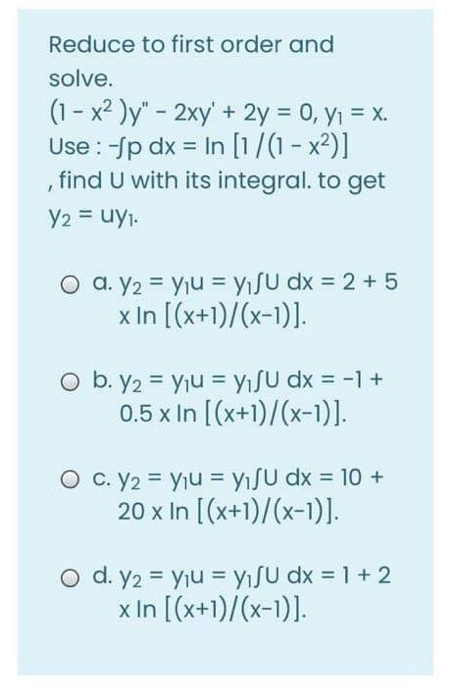



Answered Reduce To First Order And Solve 1 Bartleby
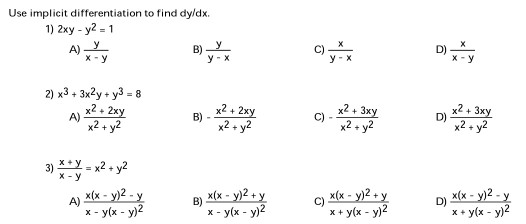



Use Implicit Differentiation To Find Dy Dx 1 2xy Y2 Chegg Com
Solve this differential equation dy/dx = 1 2xy/x^2 1 Solve this differential equation (2x 1/y) dx (x^2 1/y) dy = 0 murshid_islam said If the boundary condition was , both and would be correct solutions, right?M62 Linear Algebra and Di erential Equations Fall 13, Purdue Quiz2 Problem1 Solve the given di erential equation 2xydx (x2 1)dy = 0 SOLUTION M = 2xy @M @y



How To Solve Dy Dx 4x Y 7 2x Y 1 Quora




Solve The Diff Eqn 2xy Y2 2x2dy Dx 0 Y 1 2 Maths Differential Equations Meritnation Com
Solve the differential equation dy/dx = ((x^2 y^2 3x 3y 2xy 1)/(x^2 y^2 – 3x – 3y 2xy 2)) A curve has implicit equation x^22xy4y^2=12 a)find the expression for dy/dx in terms of y and x hence determine the coordinates of the point where the tangents to the curve are parallel to the xaxis b)Find the equation of the normal to the curve at the point (2sqrt3,sqrt3)Dy/dx=(x^2y^21)/2xy Hi, This is a Homogeneous differential equation So put y=vx and solve, ie keeping v as avariable find dv/dx in terms of dy/dx and substi




Ex 9 5 15 Class 12 Find Solution 2xy Y 2 2x 2 Dy Dx 0 When



How To Get The Special Solution Of This Differential Equation Y Xdy Dx 2 1 X 2 Dy Dx Where X 1 Y 1 Quora
Best Answer 92% (13 ratings) Given a differential equation of the form Mdx Ndy = 0 it's exact if Nx= My then to solve it we know that there is a solution F (x,y) = C that satisfies t view the full answer Previous question Next questionAnswer to SOLVE dy/dx = 2xy, y(0) = 1 By signing up, you'll get thousands of stepbystep solutions to your homework questions You can also1 If 3x^22xyy2=2 then the value of dy/dx x = 1 is A 2 B 0 C 2 D 4 E not defined 354 results




X2 1 Dy Dx 2xy X4 2x2 1 Cos X Solve This Differential Maths Differential Equations Meritnation Com



The Solution Of 1 X 2 Dy Dx 2xy 4x 2 0 Is Sarthaks Econnect Largest Online Education Community
(b) Is the solution concave up or concave down near x=3 ?22 dy dx= x2 y2 23 dy dx= y2 4x 1 2xy 24 y 2 = 5 3(x 3) 25 y= 2x 3 26 dA dt = 500ˇThe derivative of y dy/dx becomes d y/dx = sY y (0) where y (0) is the value of y when x is 0 and the second derivative of y with respect to x d^y/dx^2 becomes d^2 y/dx^2= (s^2)Ys ( y (0)) dy/dx where dy/dx is the value of the first derivative at x =0 So d^2 y/dx^2 2dy/dx y=0 becomes



Find The Equation Of A Curve Passing Through Origin And Satisfying The Differential Equation 1 X 2dy Dx 2xy 4x2 Studyrankersonline



Use The Finite Difference Approach With H 0 25 To Solve The Boundary Value Problem Y Rdquo Y 1 Y 0 1 Y 1 1
2xy9x^2 (2yx^21) (dy)/ (dx)=0, y (0)=3 \square!You can separate it out as x d x y d y = x 2 − 1 y 2 1 now put y 2 1 = u and then continue to get a very simple integrable function 21(xy^2x)dx(yx^2y)dy=0 2 1 ( x y 2 x ) d x ( y − x 2 y ) d y = 0See Answer Check out a sample Q&A here Want to see this answer and more?




If Tan 1 X2 Y2 X2 Y2 A Prove That Dy Dx X 1 Tana Y 1 Tana Brainly In




Ex 9 5 4 Show Homogeneous X2 Y2 Dx 2xy Dy 0 Ex 9 5
Experts are waiting 24/7 to provide stepbystep solutions in as fast as 30 minutes!*Solve the following differential equation (x2 y2)dx 2xy dy = 0Dy dx = x2 y2 1 with the initial condition y = 0 when x = 0 Use Picard's method to obtain y for 025;05 and 10 correct to 3 decimal places Sam Johnson NIT Karnataka Mangaluru IndiaNumerical Solution of Ordinary Di erential Equations (Part 1) 15/51




Homogeneous Differential Equations




Math 432 Hw 2 5 Solutions Pdf Free Download
The student does not consider values of the second derivative and was not eligible for any points Note that for this problem, use of the First DerivativeDx = " x5 15 − x8 24 # 2 0 = 32 15 − 256 24 = − 128 15 07 Example Evaluate Z π π/2 Z x2 0 1 x cos y x dydx Solution Recall from elementary calculus the integral R cosmydy = 1 m sinmy for m independent of y Using this resultCORPORATE INSTITUTE OF SCIENCE AND TECHNOLOGY, BHOPAL IMPORTANT QUESTIONS ( Engg Mathematics –III (BE401) ) Faculty Name Akhilesh Jain 3 Akhilesh Jain , Department of Mathematics, CIST , Bhopal akhiljain2929@gmailcom) e 3 Q 23 Find y(02) by Euler's modified method, log ( ) 10 dy xy dx , y(0)=1 RGPV May 19 RUNGEKUTTA
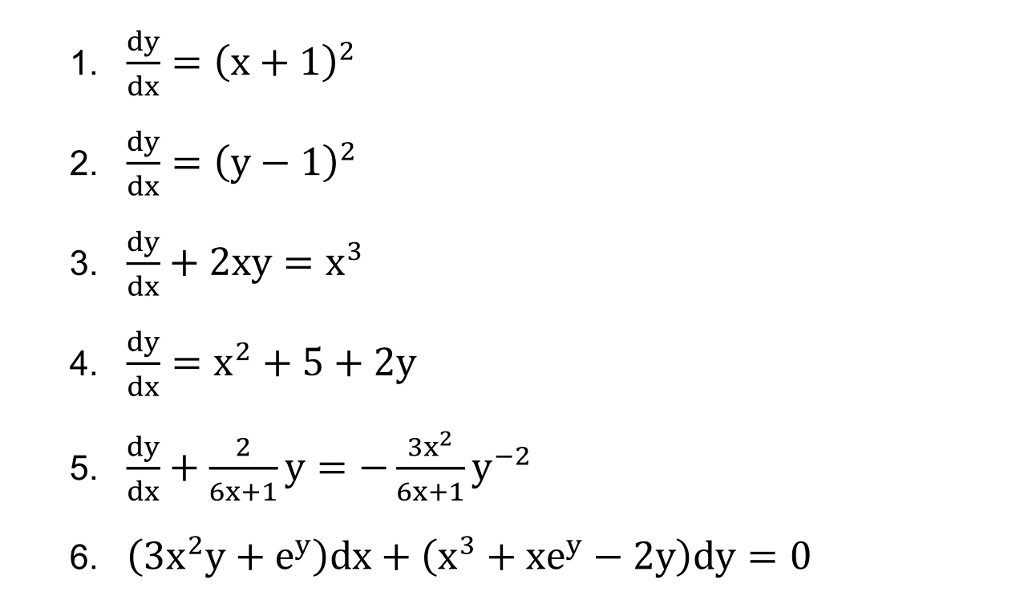



Dy Dx X 1 2 Dy Dx Y 1 2 Dy Dx 2xy Chegg Com



4 2 Implicit Differentiation
Compute answers using Wolfram's breakthrough technology & knowledgebase, relied on by millions of students & professionals For math, science, nutrition, history Ex 96, 1 For each of the differential equation given in Exercises 1 to 12, find the general solution 𝑑𝑦/𝑑𝑥2𝑦=𝑠𝑖𝑛𝑥 Step 1 Put in form 𝑑𝑦/𝑑𝑥 Py = Q 𝑑𝑦/𝑑𝑥2𝑦=sin𝑥 Step 2 Find P and Q Comparing (1) with 𝑑𝑦/𝑑𝑥 Py = Q ∴ P = 2 and Q = sin x (1) Step 3 Find integratin




Implicit Differentiation Advanced Example Video Khan Academy
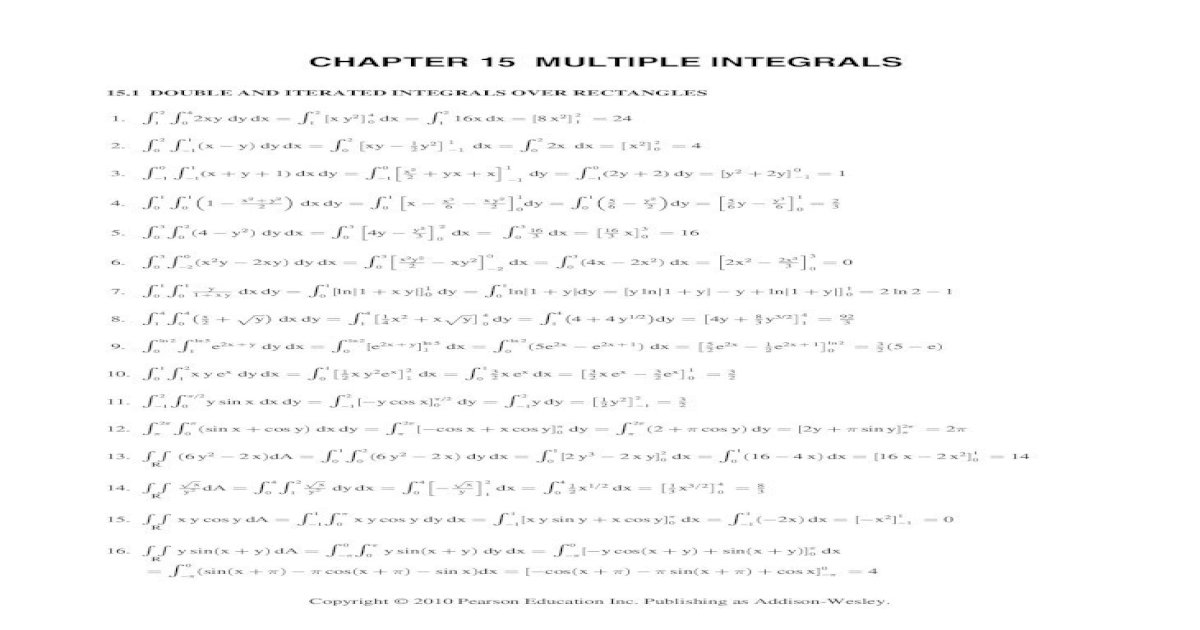



Thomas Calculus 12th Ed Solution Ch15
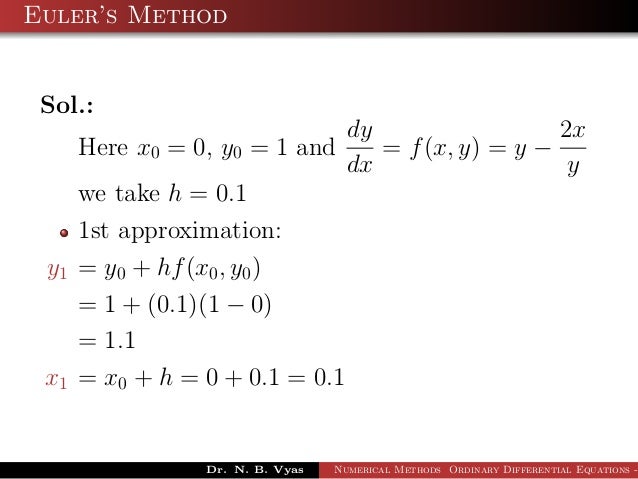



Numerical Methods Oridnary Differential Equations 2




Engineering Mathematics Notes



2




Differential Equatio Long Answer Questions 7 M R Solye 2x Y 3 Dx 2y X 1 Dy Sol Dy 2x Y 3 Given Equation Is



Solve The Following Differential Equation 1 X 2 Dy Dx 2xy 1 1 X 2 Given Y 0 When X 1 Sarthaks Econnect Largest Online Education Community
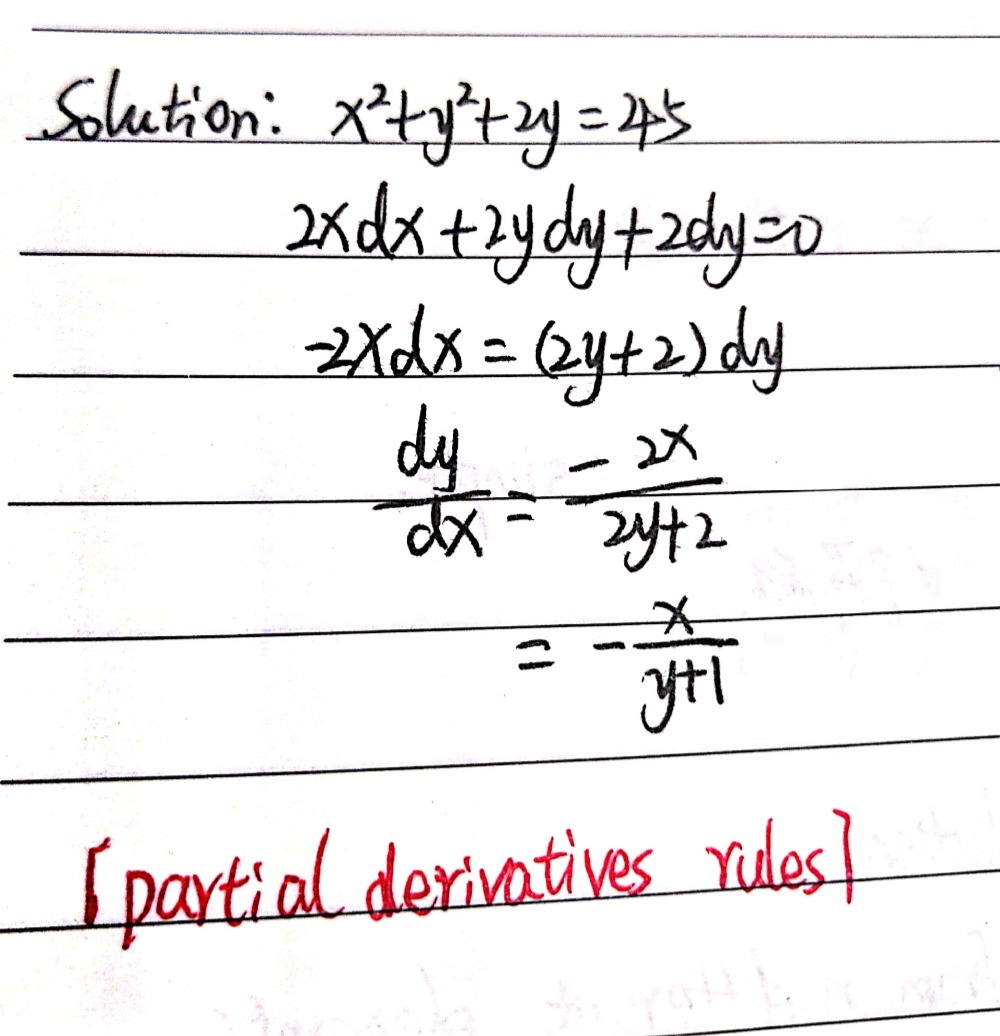



Which Of The Following Is Dy Dx Of X2 Y2 2y 45 2 Gauthmath



2



Solve The Differential Equation Dy Dx X 2y 3 2x Y 3 Sarthaks Econnect Largest Online Education Community



1



Solved Solve The Following Differential Equations X Y 3 Dx X Y 1 Dy 0 2 X Y 1 Dx 3x 4y 2 Dy C 3 1 Y 2 Xy 2 Dx X 2y Y 2xy Dy Course Hero




Math 432 Hw 2 5 Solutions Pdf Free Download




X 2 Y 2 Dx 2xy Dy 0 Youtube




Determine If The Given Ode Is Exact Or Not If It Is Chegg Com



2
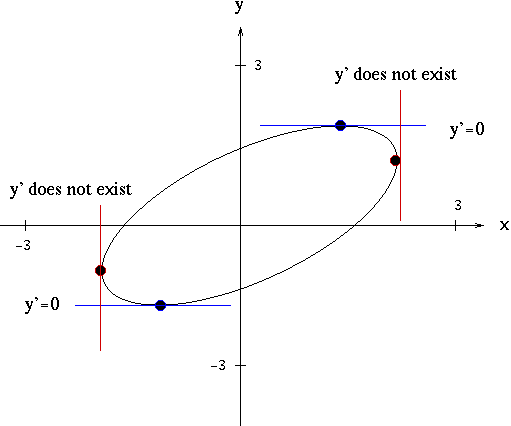



Solutions To Implicit Differentiation Problems



Solved Test Exactness And Solve Question 1 2xy 3x 2 Dx X 2 2y Dy 0 Question 2 Cosx Xsinx Y 2 Dx 2xydy 0 Question 3 2xydx X 2 Course Hero



Differential Equation Of Dy Dx 2x Y 4 4x 2y 1 Physics Forums
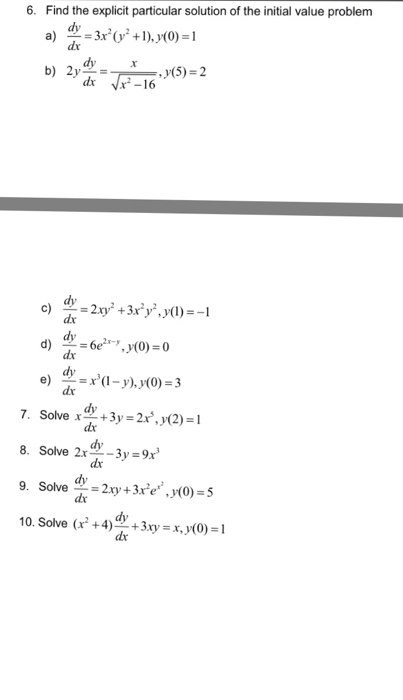



Find The Explicit Particular Solution Of The Initial Chegg Com




Answered In Exercises 1 1 Evaluate The Bartleby




Solve The Differential Equation 1 X2 Dy 2xy Dx Cot X Dx X Is Not Equal To 0 Maths Differential Equations Meritnation Com




The Solution Of The Differential Equation Y Xy 2x 2y 2 Dx X Xy X 2y 2 Dy 0 Is Given Youtube



3 8 Implicit Differentiation Calculus Volume 1



Using Euler Rsquo S Method Find An Approximate Value Of Corresponding To 1 Given That Dy Dx X 2 Y And Y 1 When X 0 Use The Step Size H 0 25




Solve Y 1 2xy Dx X 1 Xy Dy 0




Solve X 2 2xy Y 2 1 Dy Dx 2 X Y




Solve The Differential Equation And Use Matlab To Plot The Solution 2 Dy 2xy F X Y 0 2 Dx F X X0sx 1 L Homeworklib



2
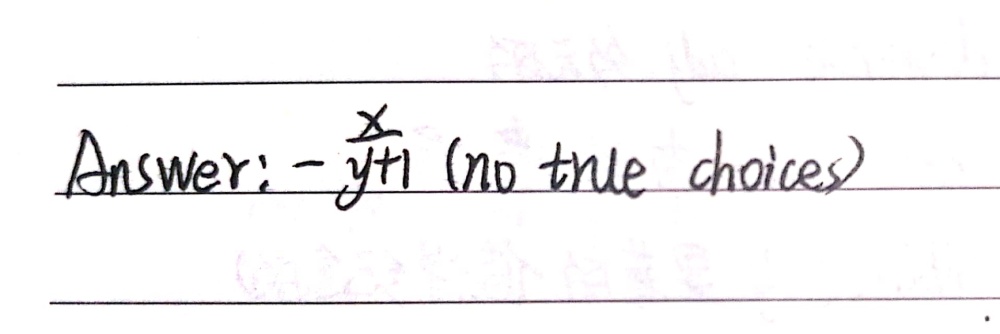



Which Of The Following Is Dy Dx Of X2 Y2 2y 45 2 Gauthmath
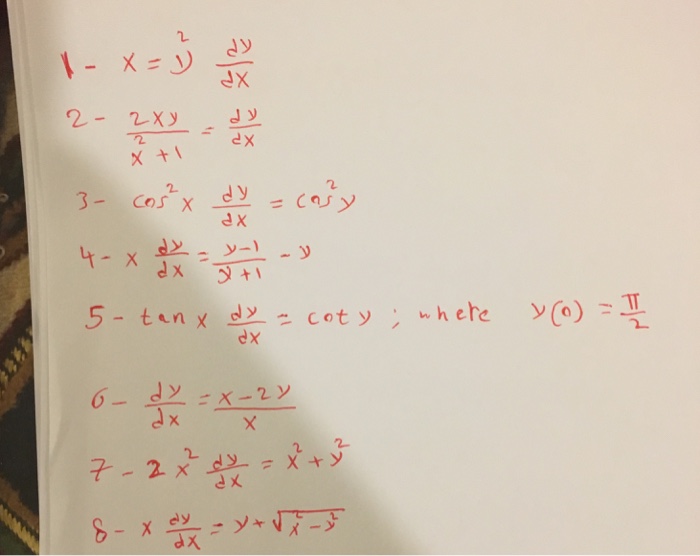



X Y 2 Dy Dx 2xy X 2 1 Dy Dx Cos 2x Dy Dx Chegg Com



2



1




Dy Dx X 2 Y 2 1 2xy Novocom Top
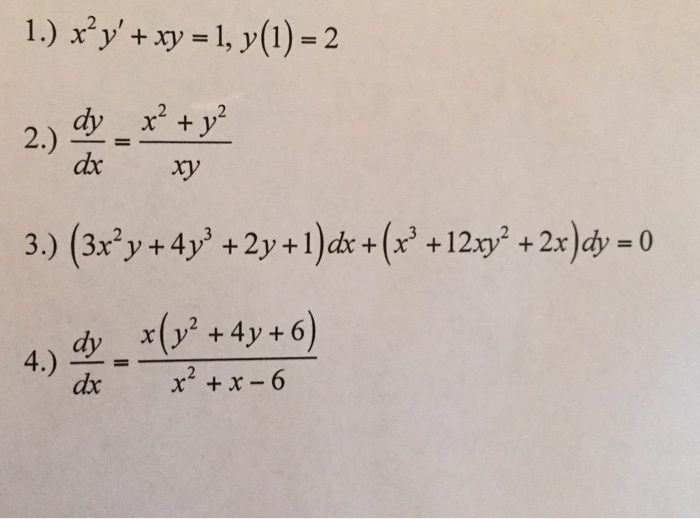



最新 Xy1 試す




Differential Equations Solved Examples Show That Following Differential Equation Is Not Exact 3x 2y 4 2xy Dx 2x 3y 3 X 2 Dy 0 Then Find An Integrating Factor To Solve The Differential Equation




Xleft Xdy Ydxright Ydx Solve See How To Solve It At Qanda
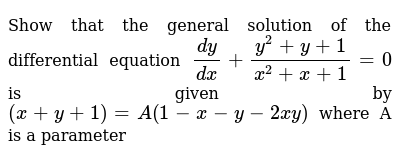



Show That The General Solution Of The Differential Equation Dy




For The Differential Equation X 2 Y 2 Dx 2xy Dy 0 Which Of The Following Are True Youtube



Solve The Differential Equation X2 1 Dy Dx 2xy 1 X2 1 Studyrankersonline




X 2 Y 2 Dx 2xy Dy 0 Integrating Factor Novocom Top
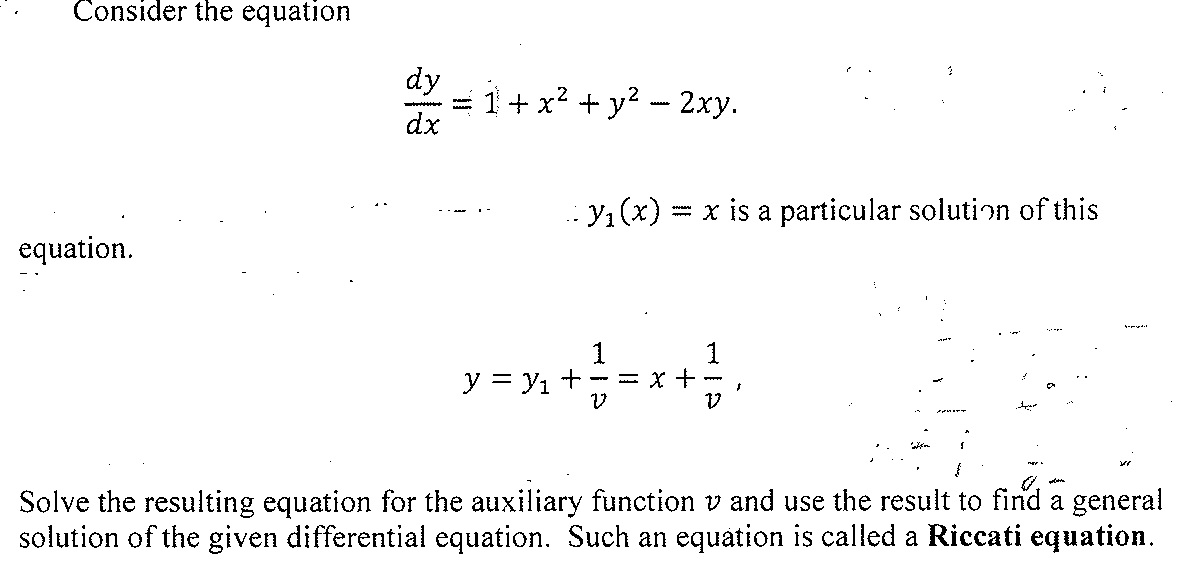



Consider The Equation Dy Dx 1 X 2 Y 2 2xy Chegg Com
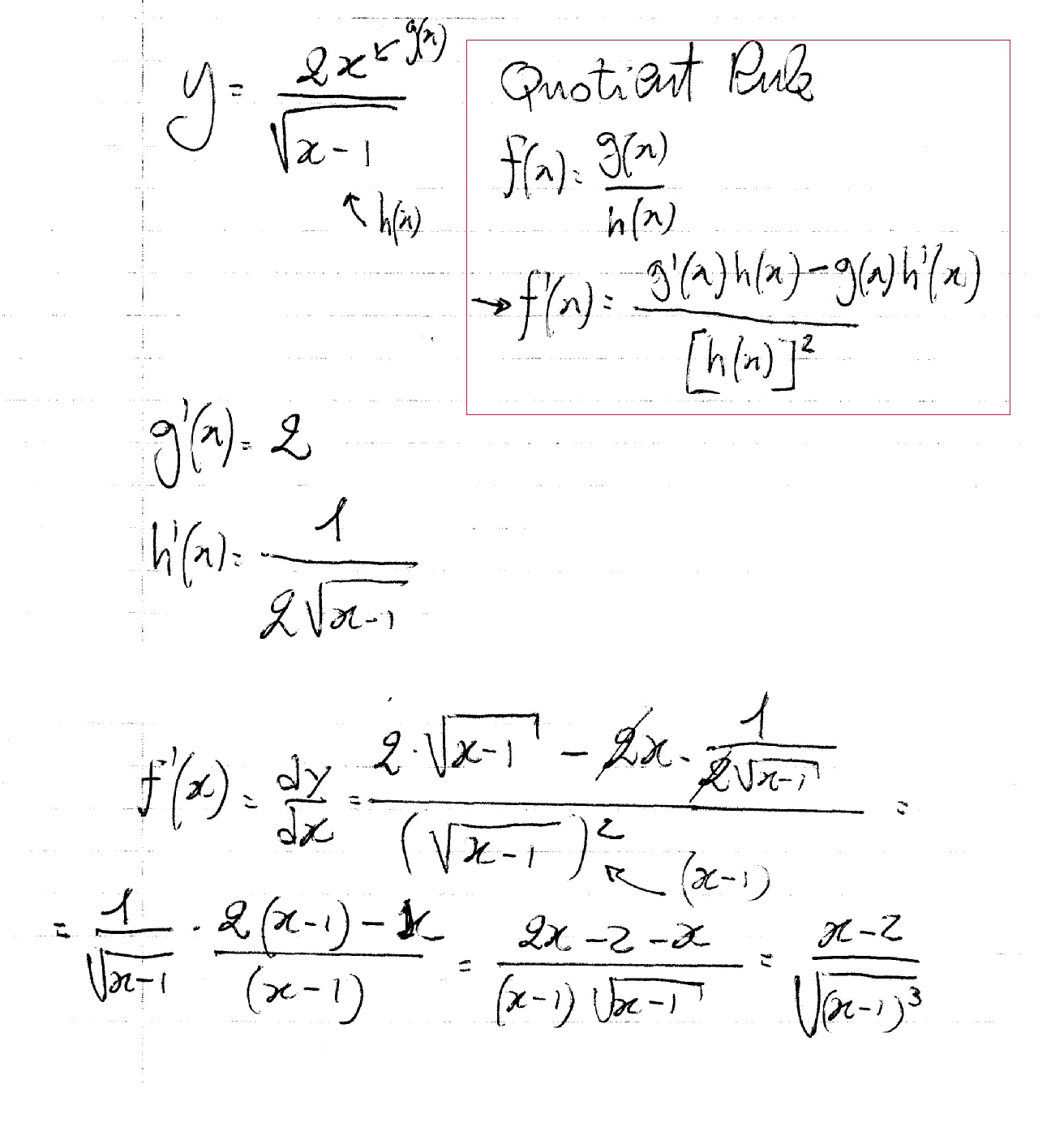



How Do You Find Dy Dx For Y 2x Sqrt X 1 Socratic




Engineering Mathematics Notes




Exact Equations Example 3 Video Khan Academy



Solve The Following Differential Equation X 2 Y 2 Dx 2xy Dy 0 Given That Y 1 When X 1 Sarthaks Econnect Largest Online Education Community



4 2 Implicit Differentiation




The Solution Of 1 X 2 Dy Dx 2xy Xsqrt 1 X 2 0 Is A Y 1




Ex 9 6 8 Find General Solution 1 X2 Dy 2xy Dx Ex 9 6




Solve X 2 1 Dy Dx 2xy 1 X 2 1 Brainly In




Solved Which Of The Following Is The Solution To The Diff Chegg Com
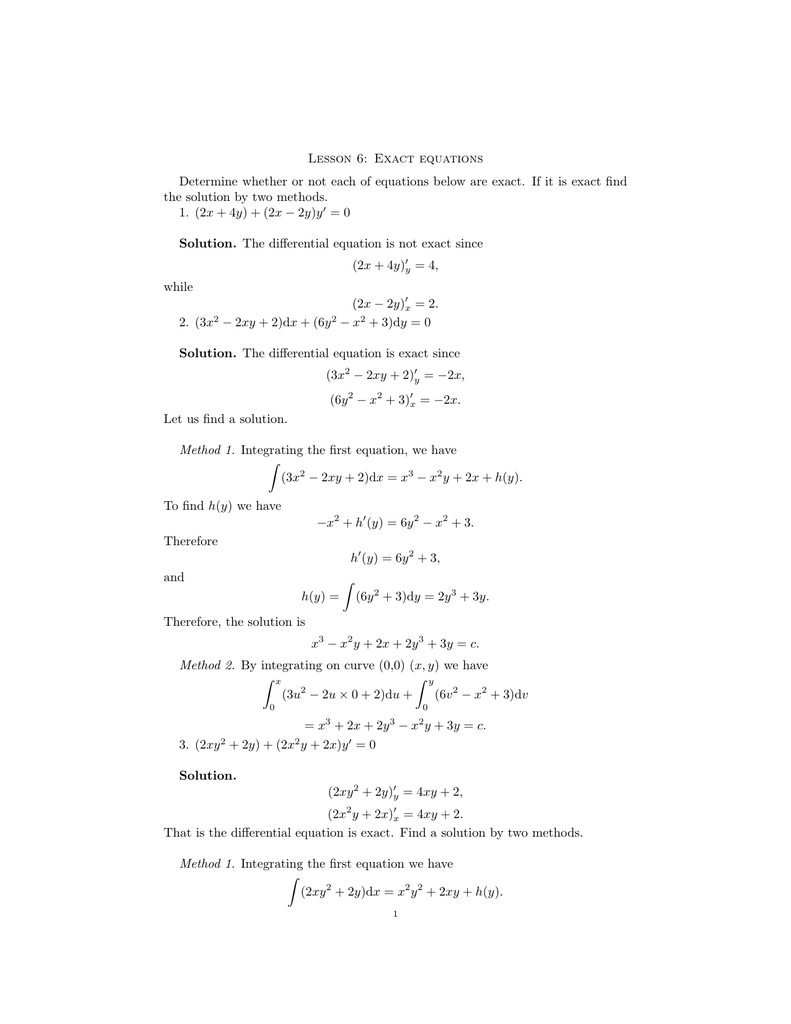



Lesson 6 Exact Equations Determine Whether Or Not Each Of



2



Q Tbn And9gcqqdjererih8cbajqv Puntih4ikbw7iy9bdv7cgyhxgixkwubp Usqp Cau
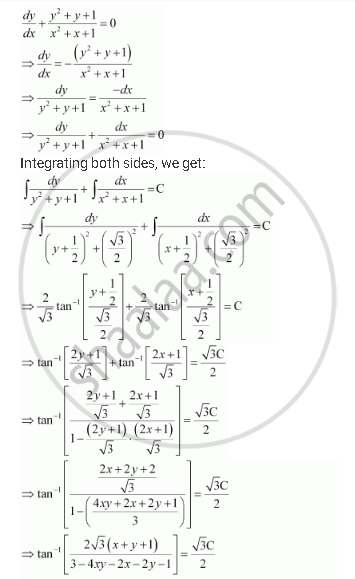



Show That The General Solution Of The Differential Equation Dy Dx Y 2 Y 1 X 2 X 1 0 Is Given By X Y 1 A 1 X Y 2xy Where A Is Parameter Mathematics Shaalaa Com




How To Solve Show The Differential Equations Are Exact 2xy Y Tany Dx X 2 X Tany 2 Secy 2 2 Dy 0 Te Tx 2x Dx Dt Xe Xt 0 Quora



2




The Solution Of Dy Dx X 2 Y 2 1 2x Y Satisfying Y 1




Dy Dx X 2 Y 2 1 2xy Novocom Top




Ex 9 6 14 Find Particular Solution 1 X2 Dy Dx 2xy




Math 432 Hw 2 5 Solutions Pdf Free Download




4 Solve The Exact Differential Equation 1 2xy Dx 4y3 X2 Dy 0 4 Solve The Exact Differential Equation Homeworklib



Solved 3 Use Implicit Differentiation To Find Dy Dx And Evaluate Dy Dx At The Point 1 1 15 P 2xy2 Exy X3 Section 3 4 The Price Demand Equa Course Hero



What Is The Solution Of Math Frac Dy Dx Frac 2xy X 2 Y 2 Math Quora




Engineering Mathematics Notes
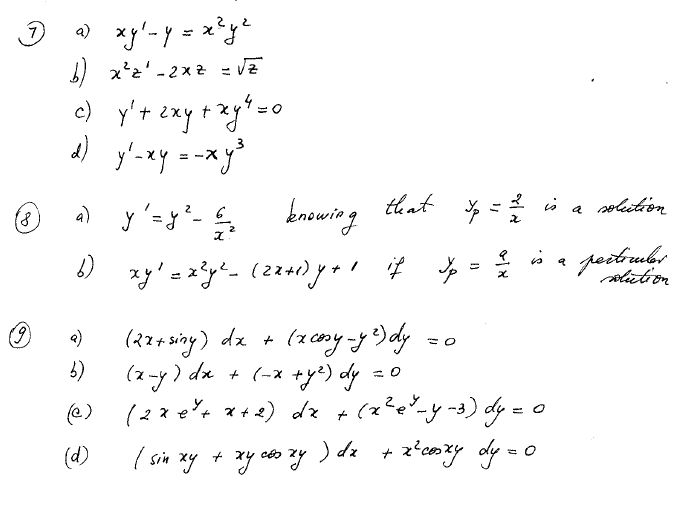



Privado Results




Differential Equations Solved Examples Show That Following Differential Equation Is Not Exact 3x 2y 4 2xy Dx 2x 3y 3 X 2 Dy 0 Then Find An Integrating Factor To Solve The Differential Equation
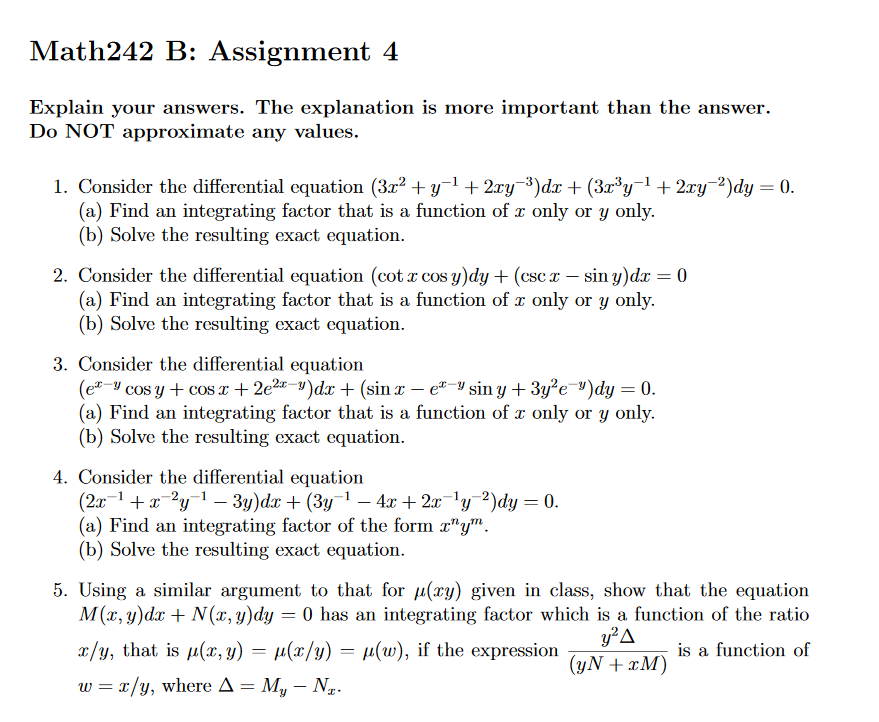



Q 3 Find The Integrating Factor And Solve The Exact Solution Consider The Differential Equation E X Y Cosy Cosx 2e 2x Y Dx Sinx E X Y Siny 3y 2e Y Dy Q 5 Prove Socratic




15 The Differential Equation 2xy Dy X2 Y2 1 Dx Determines A A Family Of Circles With Centre On X Axis B A Family Of Circles With Centre On Y Axis




Dy Dx X 2 Y 2 1 2xy Novocom Top




Misc 7 Show That General Solution Is X Y 1 A 1 X Y 2xy
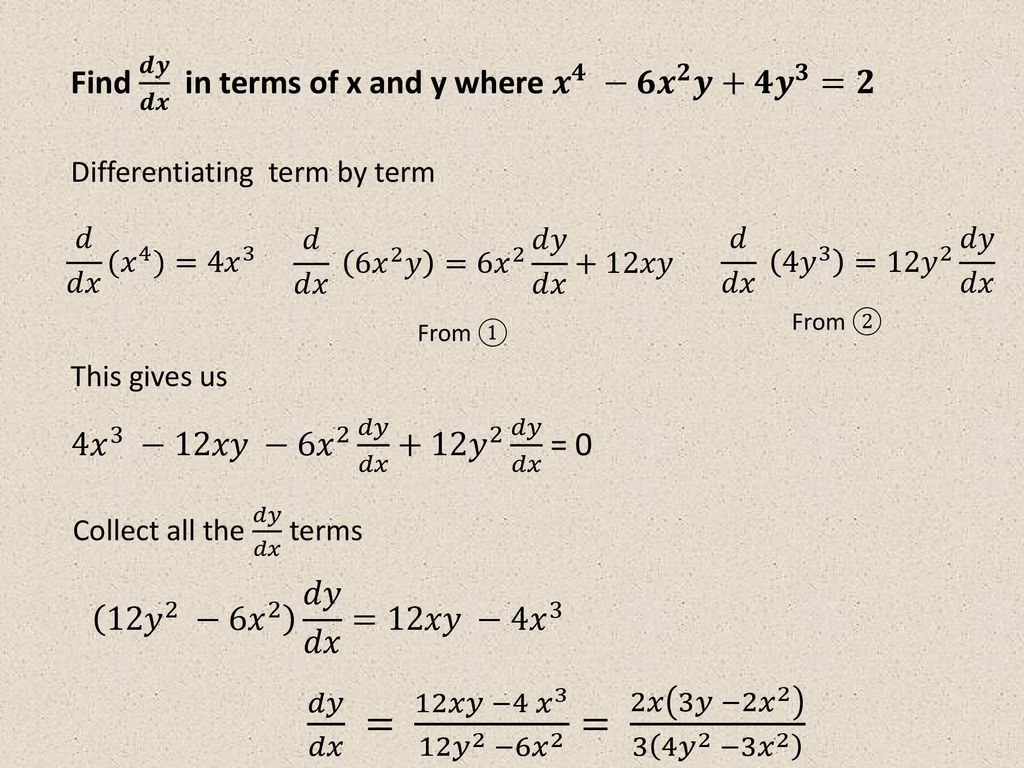



Differentiation Ppt Download
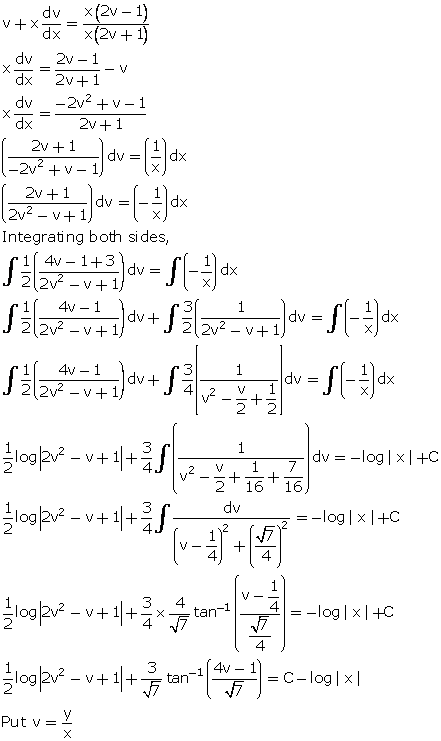



Dy Dx X 2y X X 2y X Mathematics Topperlearning Com 84onrx44



2




4 Solve The Exact Differential Equation 1 2xy Dx 4y3 X2 Dy 0 4 Solve The Exact Differential Equation Homeworklib



2
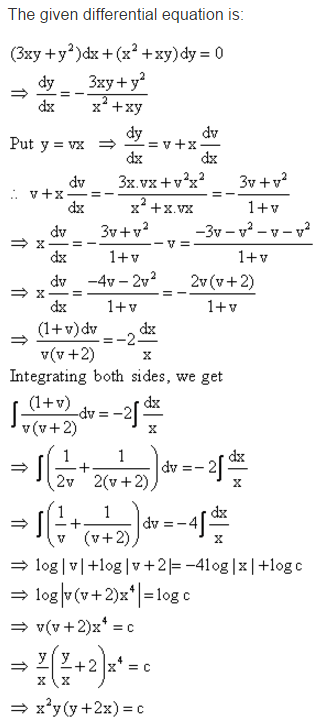



Find The Particular Solution Of Given Differential Equation 3xy Y 2 Dx X 2 Xy Dy 0 At X 1 Y 1 Mathematics Topperlearning Com D1ksg633




Exact Differential Equation 2xy 3 Dx X 2 1 Dy 0 Youtube



0 件のコメント:
コメントを投稿